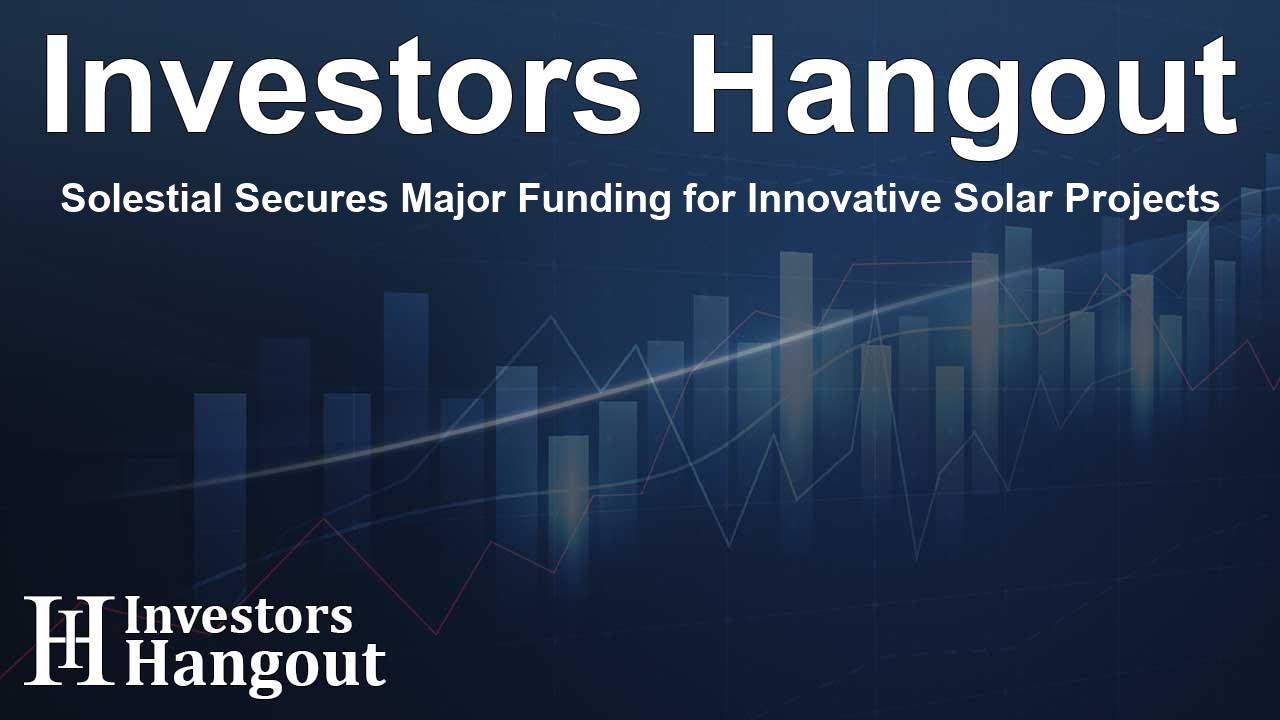Solestial Secures Major Funding for Innovative Solar Projects

Solestial Awarded $1.2 Million for Breakthrough Solar Development
Solestial, Inc. is making significant strides in the space solar energy sector with its recent selection for $1.2 million funding from SpaceWERX. This award is a major boost to the company's ongoing efforts to develop advanced solar array technology, specifically designed for small satellites.
Innovative Contract for Solar Array Technology
Under a Direct-to-Phase II contract, Solestial will focus on creating a multiorbital solar array wing concept. This funding enables the company to enhance its low-mass, radiation-hardened silicon solar cells and solar power modules. The ultimate goal is to streamline their integration and assembly processes. By developing innovative electrical interconnectors and building a complete solar array wing, Solestial aims to revolutionize satellite power solutions.
A Rapid Production Sprint
The project will culminate in an intensive two-week production sprint intended to manufacture one kilowatt of solar cells and modules. Following this, another two-week assembly run will demonstrate the feasibility of constructing an entire solar array wing within just one month. This timeline is crucial as it addresses the industry's pressing need for faster solar technology deployment.
Supporting National Defense and Space Operations
The award aligns with the Department of the Air Force's (DAF) objectives outlined in their Open Topic SBIR/STTR program, initiated to expand support for innovative technologies that bolster national defense. Margo de Naray, CEO of Solestial, expressed how this contract represents a substantial opportunity for research and development, emphasizing the critical support it will provide to the U.S. Space Force's operational capabilities.
Tackling Manufacturing Challenges
Long lead times associated with traditional solar technologies have posed challenges for many space applications. Solestial's approach using affordable silicon and automated manufacturing techniques positions them as an innovative leader. Their commitment to quick turnaround times and effective solutions stands to significantly enhance mission readiness for various space operations.
Funding from Major Organizations
In addition to this recent award, Solestial has secured over $7 million in Small Business Innovation Research (SBIR) contracts from prestigious entities such as the U.S. Air Force, NASA, and the National Science Foundation. This financial backing underscores the confidence placed in Solestial’s unique capabilities within the aerospace sector.
About Solestial and Its Vision
Solestial is committed to delivering abundant energy in space through its groundbreaking technology. The company has engineered silicon solar cells that self-cure radiation damage when exposed to sunlight, even under low-temperature environments. Their flexible solar power modules are specifically designed to endure up to a decade in diverse space conditions while also being cost-effective compared to traditional solar technologies.
Shaping the Future of Space Solar Technology
Solestial's vision extends from current satellite constellations to potential lunar settlements, aiming to offer sustainable solutions for powering future endeavors in space. Their focus on scalable solar technology aligns with a broader effort to promote energy availability in various extraterrestrial settings.
Looking Ahead: Collaborations and Technological Advancements
As Solestial progresses with this new funding, it remains poised to collaborate with other leaders in the space industry to further innovate solar technology. Their partnership with SpaceWERX sets a promising foundation for future projects and developments that will ultimately serve humanity's endeavors beyond Earth.
Frequently Asked Questions
1. What is the purpose of the $1.2 million award to Solestial?
The funding is aimed at developing advanced solar technologies for small satellites, specifically focusing on multiorbital solar array wings.
2. How does Solestial's technology differ from traditional solar technology?
Solestial uses low-mass, radiation-hardened silicon solar cells that allow for rapid production and integration, solving lengthy manufacturing challenges in the industry.
3. What are the future applications of Solestial's solar technology?
The technology aims to support satellite operations and potential lunar settlements, providing sustainable power solutions in space.
4. Who are some of the major supporters of Solestial?
Solestial has received funding from organizations like the U.S. Air Force, NASA, and the National Science Foundation, highlighting its credibility in the space sector.
5. What is the significance of the Department of the Air Force's SBIR program?
The SBIR program expands funding for innovative technologies that enhance national defense and support aerospace advancements, of which Solestial is a key participant.
About The Author
Contact Kelly Martin privately here. Or send an email with ATTN: Kelly Martin as the subject to contact@investorshangout.com.
About Investors Hangout
Investors Hangout is a leading online stock forum for financial discussion and learning, offering a wide range of free tools and resources. It draws in traders of all levels, who exchange market knowledge, investigate trading tactics, and keep an eye on industry developments in real time. Featuring financial articles, stock message boards, quotes, charts, company profiles, and live news updates. Through cooperative learning and a wealth of informational resources, it helps users from novices creating their first portfolios to experts honing their techniques. Join Investors Hangout today: https://investorshangout.com/
The content of this article is based on factual, publicly available information and does not represent legal, financial, or investment advice. Investors Hangout does not offer financial advice, and the author is not a licensed financial advisor. Consult a qualified advisor before making any financial or investment decisions based on this article. This article should not be considered advice to purchase, sell, or hold any securities or other investments. If any of the material provided here is inaccurate, please contact us for corrections.
